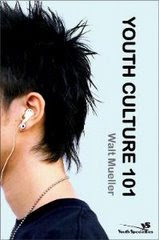 So Derek has issued the challenge. . . . the 10 books that have had the greatest influence on my life. I’ll add this clarifier. . . “besides the Bible.” This is a tough one. How do you narrow it down? I estimate that I’ve got about 2200 books on the shelves in my office. Several hundred more are at home. Others are sitting on the shelves in the libraries where I checked them out, and still more are books that I sold. . . . which means they probably weren’t that influential, or I just flat-out needed some money.
So Derek has issued the challenge. . . . the 10 books that have had the greatest influence on my life. I’ll add this clarifier. . . “besides the Bible.” This is a tough one. How do you narrow it down? I estimate that I’ve got about 2200 books on the shelves in my office. Several hundred more are at home. Others are sitting on the shelves in the libraries where I checked them out, and still more are books that I sold. . . . which means they probably weren’t that influential, or I just flat-out needed some money.I established some parameters to help me narrow it down. The books have to be books that I look at and say, “Yep, that book has shaped who I am, what I value, and how I live my life.” A really influential book has the power not only to shape, but to be read again and to leave you re-shaped. I chose 10 books that I would call “marker books.” In other words, they were so influential that they stand out as catalysts for or part of watershed moments in my life.
The first book I remember is Madeleine L’Engle’s A Wrinkle in Time. When I retreat into my memory and travel back to third and fourth grade at Cedar Road Elementary School, I can see myself standing in the library. Right there in the middle shelf on the outside front wall, about halfway up. . . that’s where this one sat. I remember checking it out several times. My name was on that card more than once. I can still feel and hear the crinkle of the cellophane jacket as I escaped into this fabulous story. My academic career was one marked by frustration. I sometimes wonder if I didn’t have some kind of learning disability or ADD. My only success came in reading. I was always in the highest-level reading group and even skipped up a grade once to read with the older kids. I loved reading for that and several other reasons. I’m not sure how A Wrinkle in Time shaped my life other than it was the first thick book I ever read. And, I loved it enough to keep going back.
A strange addition from my childhood would be the Book of Common Prayer, specifically the edition used in the Reformed Episcopal Church. My dad was an R.E. pastor way back then. When I was in 6th grade I went through Confirmation Class, an experience which culminated with my public profession of faith. I think there was a reception after the ceremony. But what I remember most was being handed a brand new red-covered copy of the Book of Common Prayer that was personalized with my name – “Walter Mueller” – in gold stamping right there on the front cover. That little book nurtured me into an appreciation for the beauty and order of well-thought-out liturgy, and it shaped the way I pray today.
Fast-forward to college. I was a sociology major. The text for Sociology 201 was written by the professor, Dr. Russell Heddendorf. The book was titled In The World: An Introduction To Sociology. It wasn’t published at the time and it still hasn’t been published. The text was on mimeographed sheets that were copies of Doc Heddendorf’s own typed manuscript. It was in a cardboard loose-leaf notebook. Built on the foundation of Jesus’ prayer for His disciples in John 17, that book steered my worldview in a new direction that I’ve been going in ever since. I still pull it off the shelf from time to time.
During those same years I took a little one-credit discussion class on John Bunyan’s Pilgrim’s Progress. I learned a little bit about reading the classics, a little bit about reading good literature, and a lot about my faith. I need to go back and read it again.
Shortly thereafter I graduated and went into campus ministry with the Coalition for Christian Outreach. It was during my time with the CCO that I was exposed to the next two books on my list. Number Five is John White’s The Fight. My copy of this then-popular book on discipleship shaped my thinking on what it means to be a follower of Jesus Christ. I led numerous student groups through a study of The Fight.
Without my CCO years I don’t think I would have ever discovered Albert Wolters’ Creation Regained: Biblical Basics for a Reformational Worldview. This book is serendipitous and transformative for all who read it. Not only is it a great intro to the life-giving and incredibly liberating theological system known as Dutch Neo-Calvinism (the foundation beneath our theology of faith and culture here at CPYU), but it lays out redemptive history in amazing ways. Anyone who is a follower of Jesus Christ needs to give this book a shot. You will quickly learn that the Gospel encompasses much, much more than the message of how to personally get saved.
My time at Gordon-Conwell Seminary was filled with books. Surprise, surprise. Several thousands of pages from books too numerous to count for each and every course I took. I narrowed my seminary time down to one book: How to Read the Bible For All Its Worth by Douglas Stuart and Gordon Fee, two of my GCTS profs. I think it's now out in its third edition. This book is the antidote to so much of what ails the church in terms of Bible study, interpretation, and application.
Next up is John Stott’s Contemporary Christian. I’ve read it several times. I’ve marked it up. I’ve quoted it endlessly and will keep on doing so. I’ve assigned it as required reading to students. Again, this one is an antidote to much of what ails me and serves the same purpose for the contemporary church.
Because I study youth culture, I have to add a book to my list that opened my eyes to the stuff kids face. David Elkind’s All Grown Up and No Place to Go was dead-on when it was written 25 years ago. It was also prophetic. Why? Because it’s dead-on for today. I had the thrill of talking to Elkind when he spoke at a National Youthworkers Convention back in the 1980s. He autographed my book. His mark is also on my life. I study culture because kids hurt. Elkind help me to understand hurting kids.
Finally, there’s a book that I pull off my shelf from time to time as a prescriptive remedy to difficulty. My dad turned me on to it, which means that it has a special place in my heart. It’s from Martyn Lloyd-Jones. Spiritual Depression: Its Causes and Cure has served me well over the years. Enough said.
That’s it. Ten. I wonder if my list will look any different ten years from now. Maybe I’d better get around to reading The Outrageous Idea of Academic Faithfulness!

















No comments:
Post a Comment